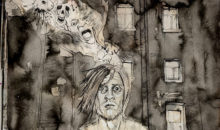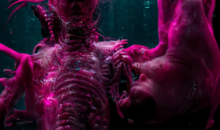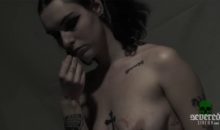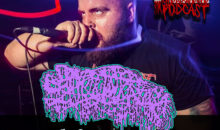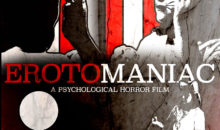The Evolution of Practical Effects in Horror Films: From Classic Monsters to Modern Gore

Horror films have long been a mainstay of cinema, enthralling audiences with their spine-tingling scares and monstrous creations. One of the pivotal aspects contributing to the allure of horror movies is the employment of practical effects, which bring creatures, monsters, and gore vividly to life on the screen. From the infancy of cinema to the present era, practical effects have been instrumental in crafting unforgettable and chilling moments that resonate with viewers. In this article, we’ll delve into the evolution of practical effects in horror films, charting their progression from classic monsters to contemporary depictions of visceral terror.
As technology has advanced and filmmaking techniques have evolved, practical effects have continued to adapt and innovate, remaining a cornerstone of horror cinema. While digital effects have become increasingly prevalent, practical effects retain a distinct charm and authenticity that resonate with audiences. Filmmakers like Guillermo del Toro and Sam Raimi have embraced practical effects, combining them with digital enhancements to create truly immersive and terrifying experiences for viewers. Their commitment to practical effects ensures that horror films continue to deliver visceral thrills and unforgettable nightmares for generations to come.
In addition to their impact on the film industry, practical effects have also influenced other forms of entertainment, including the world of online gaming. Just as filmmakers use practical effects to enhance the immersive experience of horror films, online casinos utilize promo codes like casino promo code to enhance the gaming experience for players, offering exciting bonuses and rewards that add an extra layer of excitement to the gameplay.
The Birth of Practical Effects: Silent Era to Golden Age
Practical effects have been integral to filmmaking since the earliest days of cinema, with pioneers utilizing techniques like makeup, prosthetics, and miniatures to achieve realistic and immersive visuals. From the silent era to the golden age of Hollywood, practical effects played a crucial role in bringing iconic monsters such as Dracula, Frankenstein, and the Wolf Man to life on the silver screen. Makeup artists and special effects technicians honed their craft, developing innovative methods to transform actors into terrifying creatures and push the boundaries of visual storytelling.
The evolution of practical effects continued into the modern era, with advancements in technology enhancing filmmakers’ ability to create astonishingly lifelike effects. While digital effects have become increasingly prevalent in recent years, practical effects remain a beloved and respected aspect of filmmaking, cherished for their tangible realism and tactile appeal. Filmmakers like the aforementioned Guillermo del Toro and Christopher Nolan have championed the use of practical effects, blending them seamlessly with digital techniques to create visually stunning and emotionally resonant cinematic experiences.
The Golden Age of Practical Effects: 1970s to 1980s
The 1970s and 1980s marked a significant era for practical effects in horror cinema, witnessing groundbreaking advancements in makeup, prosthetics, and animatronics. Filmmakers during this period pushed the boundaries of creativity, delivering iconic films like “The Exorcist,” “Alien,” and “An American Werewolf in London,” which showcased revolutionary practical effects that left audiences in awe.
- Practical effects in these films often involved intricate makeup applications, prosthetic enhancements, and sophisticated animatronic creatures, demonstrating the versatility and ingenuity of practical effects artists.
- The success of these films elevated makeup artists like Rick Baker and Tom Savini to legendary status within the industry, as they pioneered new techniques and set new standards for realism in horror effects.
- The golden age of practical effects not only terrified audiences but also inspired future generations of filmmakers and special effects artists to explore the possibilities of practical effects in storytelling.
- Despite the advent of digital effects technology, the legacy of practical effects from the 1970s and 1980s continues to influence contemporary horror cinema, with filmmakers often opting for practical effects to achieve a visceral and authentic cinematic experience.
The Rise of CGI: 1990s to 2000s
With the rise of computer-generated imagery (CGI) in the 1990s, practical effects gradually took a backseat to digital effects in many Hollywood productions. While CGI opened new possibilities for filmmakers to craft fantastical creatures and environments, some horror enthusiasts mourned the diminishing presence of the tactile and immersive quality offered by practical effects. Nevertheless, practical effects persisted in horror cinema during this era, with directors blending practical techniques with CGI to deliver memorable and chilling scares.
Despite the dominance of CGI in mainstream filmmaking, practical effects have experienced a resurgence in recent years, driven by a renewed appreciation for their authenticity and craftsmanship. Filmmakers and audiences alike have begun to recognize the unique charm and impact of practical effects, leading to a revival of interest in traditional techniques. This resurgence has sparked a renaissance in practical effects, with contemporary horror filmmakers incorporating them into their projects to evoke nostalgia and enhance the visceral experience of their films.
The Resurgence of Practical Effects: 2010s to Present
In recent years, there has been a resurgence of practical effects in horror films, driven by a desire to evoke the classic atmosphere of genre classics and by advancements in technology. Filmmakers like Ari Aster, Jordan Peele, and Robert Eggers have showcased the effectiveness of practical effects in movies such as “Hereditary,” “Get Out,” and “The Witch.” These directors have successfully demonstrated that old-school techniques still have the power to terrify modern audiences.
- Practical effects offer a tangible and visceral quality that CGI often struggles to replicate, adding authenticity to on-screen horror experiences.
- The resurgence of practical effects also reflects a nostalgic longing for the practicality and craftsmanship of filmmaking techniques from earlier eras.
- Advances in technology have made practical effects more accessible and cost-effective, enabling filmmakers to achieve impressive results without relying solely on computer-generated imagery.
- By blending practical effects with digital technology, filmmakers can create seamless and immersive cinematic experiences that appeal to both traditionalists and modern audiences alike.


